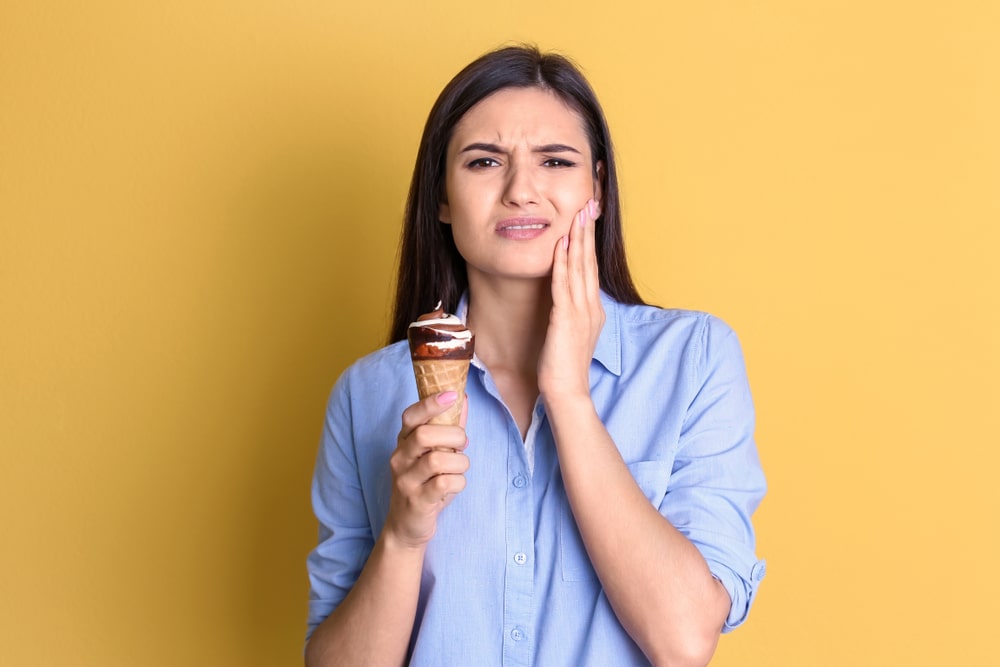Dental health issues can manifest in various forms, and among the most common complaints are dental pain and tooth sensitivity. While these terms are often used interchangeably, they refer to different experiences. Understanding their similarities and differences is essential for effective treatment and prevention.
What is Dental Pain?
Dental pain is a broad term that encompasses any discomfort or pain in the teeth, gums, or jaw. It can range from mild to severe and can be acute or chronic. The nature of dental pain varies – it can be sharp and stabbing, dull and throbbing, or constant. It may worsen with biting or chewing and can be accompanied by other symptoms like swelling, bleeding, or infection.
Common Causes of Dental Pain
- Tooth Decay: Cavities can lead to pain as they progress.
- Gum Disease: Inflammation and infection in the gums can cause discomfort.
- Abscesses: These infections at the root of a tooth or in the gums can cause severe pain.
- Fractured Teeth: Cracks or breaks in the teeth can be painful.
- Impacted Teeth: Teeth that haven’t erupted properly, like wisdom teeth, can cause pain.
Treatment For Dental Pain
- Address Underlying Causes: Treatment for cavities, gum disease, or abscesses.
- Pain Management: Over-the-counter pain relievers and prescribed medications.
- Restorative Dentistry: Fillings, crowns, or root canals to repair damaged teeth.
What is Tooth Sensitivity?
Tooth sensitivity, or dentin hypersensitivity, is a specific kind of dental discomfort. It’s characterized by a sharp, sudden pain triggered by specific stimuli such as hot, cold, sweet, or acidic foods and drinks. The pain is usually brief but can be quite intense. Unlike general dental pain, tooth sensitivity typically occurs in response to an external trigger.

Common Causes of Tooth Sensitivity
- Enamel Erosion: Worn enamel exposes the dentin, leading to sensitivity.
- Receding Gums: Exposed tooth roots are more sensitive to stimuli.
- Recent Dental Work: Procedures like fillings or whitening can temporarily increase sensitivity.
- Cracked Fillings: Old or damaged fillings can expose sensitive parts of the tooth.
Treatments For Tooth Sensitivity:
- Desensitizing Toothpaste: These can block the transmission of pain signals from the tooth surface to the nerve.
- Fluoride Treatments: Applied by a dentist to strengthen enamel and reduce sensitivity.
- Dental Procedures: Bonding, crowns, or inlays to cover exposed roots or damaged enamel.
Similarities Between Dental Pain and Tooth Sensitivity
Dental pain and tooth sensitivity, while distinct in their characteristics, share several similarities that are important to recognize. Both conditions can significantly impact an individual’s quality of life by causing discomfort or pain in response to common daily activities like eating, drinking, and oral hygiene routines. They often serve as indicators of underlying dental issues, such as enamel erosion, gum disease, or tooth decay. The overlapping causes of these conditions mean that one can sometimes lead to or exacerbate the other. For instance, gum recession can contribute to both sensitivity and dental pain by exposing more vulnerable parts of the tooth. Additionally, both dental pain and sensitivity can fluctuate in intensity and may require similar preventive measures, such as maintaining good oral hygiene, using specific toothpastes, and seeking regular dental check-ups. Understanding these similarities is crucial for effectively managing and treating both conditions, ensuring better overall oral health and comfort.
Dental Pain vs. Tooth Sensitivity: Key Differences
| Aspect | Dental Pain | Tooth Sensitivity |
| Triggered vs. Constant | Can be constant or triggered by biting or pressure. | Typically triggered by specific stimuli like temperature changes. |
| Duration | Can be persistent. | Usually momentary. |
| Location | Can occur anywhere in the mouth. | Usually localized to specific teeth. |
When to See a Dentist
- Persistent or Severe Pain: Ongoing pain requires professional evaluation.
- Sudden Increase in Sensitivity: Especially if it’s severe or doesn’t respond to over-the-counter treatments.
- Accompanying Symptoms: Such as swelling, fever, or signs of infection.
Conclusion
While dental pain and tooth sensitivity may seem similar at first glance, they have distinct characteristics and causes. Understanding these differences is crucial for proper treatment and maintaining oral health. Regular dental check-ups and good oral hygiene can prevent many causes of both dental pain and sensitivity. If you’re experiencing any form of dental discomfort, it’s important to consult with your dentist for a proper diagnosis and appropriate treatment plan.

Dr. Snehlata Kulhari completed her Bachelors of Dental Surgery (BDS) at Government Dental College in Punjab, India and her Doctor of Dental Medicine (DMD) degree at the Henry M. Goldman School of Dental Medicine in Boston. She has been practicing dentistry since 2011 and has founded Smile Mantra Family Dentistry to provide dental care and education to the community of Cary, NC. Dr. Kulhari stays up to date on the latest dental research and advancements in order to offer her patients exceptional dental care.



